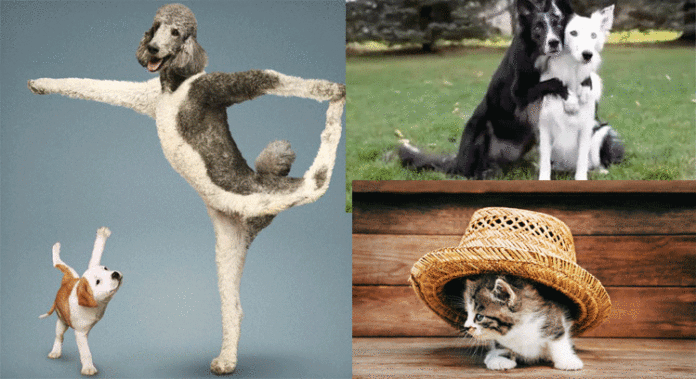
PHOTOGRAPHING YOUR favourite pets and sharing them on social media can be a tricky business, not least because many of them refuse to sit still for any length of time. Follow our top tips though and you will get some great results.
1. CAPTURE YOUR PET’S PERSONALITY
Pets all have their own distinct personality, just like humans and ideally you want to capture this in your photos of them. Whether you own a yappy Jack Russell that can’t stand still, or a lazy house cat that spends most of its time curled up in a doze, try to photograph your pet in a situation that best sums up their personality.
2. NATURAL LIGHT WORKS BEST
There’s no ideal place to photograph a family pet, but somewhere with a bit of space and good light is ideal. Speaking of light, do pay attention to where the natural light in your location is coming from and try to shoot at an optimal time of day.
As with regular portrait photography the softer, more directional sunlight of early morning and late evening makes for much more interesting images. Bounced flash, or flash that has been heavily diffused through the use of photographic soft boxes or umbrellas is generally OK, but avoid using direct flash straight from your camera as this is likely to startle and/or unnerve your pet.
3. PUT A PERSON IN THE PICTURE
This is a great way to give scale and extra meaning to a photo. For example, if you have a child who is particularly attached to a family pet then get them to show that pet a little love and capture the moment on camera. Zoom in tight, so that you fill most of the frame with them both, otherwise they might get lost in the background. Of course, it doesn’t have to be a child either – adults and pets make great photos too.
4. SHOOT AT PET LEVEL
Pets are generally a lot smaller than humans so it pays to get down to their level. Try and shoot from a low angle or even ground level, rather than just standing up and holding the camera in front of you as you might when photographing a person.
5. USE INTERESTING ANGLES
Because pets are generally much smaller than humans it’s a lot easier to play around with interesting angles rather than just shooting side-on or head-on.
6. SELECT A LOW APERTURE
Just like when taking portraits of people, selecting a low aperture (anywhere from f/1.4 – f/4) can work wonders as this creates a shallow depth of field effect that results in a pin-sharp pet and a blurred background. In turn, this ensures that your pet will proudly stand out from the background. The best setting to use on DSLRs and compact system cameras is Aperture-priority mode, however if your camera doesn’t offer this then look for a ‘Portrait’ mode in the Scene mode options of your camera instead – this will generally force the camera to use as low an aperture as possible.
7. FOCUSING
Dogs and cats have distinct personalities. Set your focus point on the pet’s eyes or head, just as you would when photographing a person.
8. USE A PROP
Using a prop can often enhance an image immeasurably. From dogs in sunglasses to cats in hats pretty much anything goes – just so long as it doesn’t cause the animal any distress obviously. Look around to see what you have to work with and then use your imagination.
9. BE PATIENT
While dogs can be trained to stand on their hind legs or roll onto their back, directing other pets is unrealistic. Set enough time aside and don’t expect to get the perfect shot quickly. When photographing pets it helps immensely if you treat the session as extended playtime. Encourage your pet to do things, but don’t get impatient if they fail to co-operate. The best shots nearly always come to those that wait.








